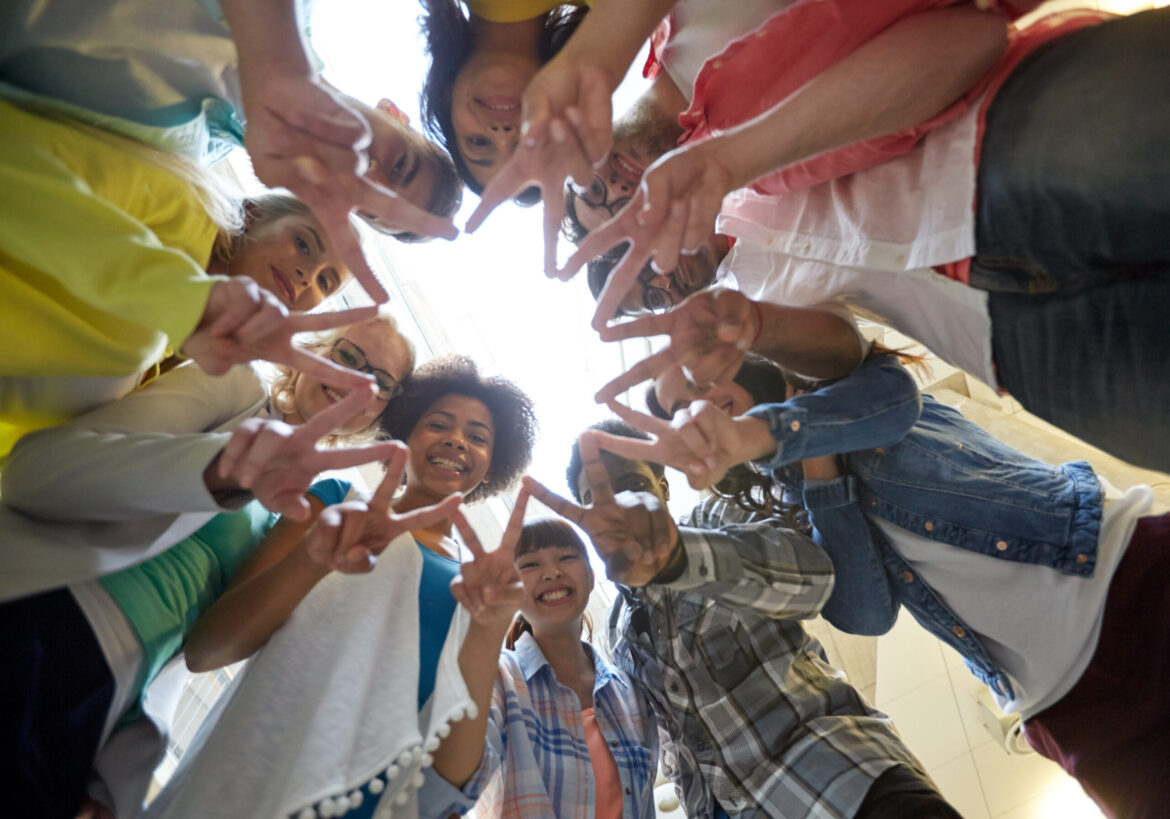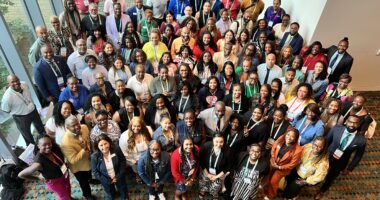Supporting Safe School Communities Through PEACE
A Washington, D.C., school is enlisting partnerships, education, advocacy, collaboration, and empathy to overcome acts of violence in their community and support a safe, trauma-informed school.

Shootings and acts of violence perpetuate unrest, insecurities, and trauma in many of our American neighborhoods today. Without a doubt, schools are increasingly impacted by all forms of violence as these horrors seep into our shared spaces. We are all negatively affected, albeit consciously or unconsciously, because we are hardwired for connection and cohesion, not disorder and disasters.
Our school community is standing up to violence with courage and love. We are on a mission to protect everyone both within and beyond our walls. As new community organizers, we are working together with neighborhood leaders to intervene and prevent crime and violence.
Using PEACE—partnerships, education, advocacy, collaboration, empathy—to guide us, here’s what we’ve learned so far.
Partnerships
Everyone has a role to play in promoting community safety. In particular, schools are prominently positioned to make an impact. We are neutral grounds where the joy and innocence of our youth permeate. We have several school partners who help us work with students. They support our instruction and provide high-quality programming.
In the pursuit to end violence in our school community, we have also expanded our partnerships strategically beyond academic initiatives. We have strengthened our relationships with local housing authorities, law enforcement, nonprofit organizations, neighborhood leadership, politicians, and well-respected groups in our community to synchronize support for students and families in need. We host community safety meetings with a cross-section of leaders in our school library. Our community police officers support our literacy initiatives by reading to students and visiting our classes.
By increasing accessibility and visibility with various community leaders and workers, we are helping to foster more unity in our neighborhood.
Education
Our children are the promise of our present and future generations. They will have to confront problems and innovations in a world we cannot yet imagine.
As Frederick Douglass said: “It is easier to build strong children than to repair broken men.” We all know that developing students’ social-emotional learning (SEL) competencies is critical and urgent. We have increased our investments in holistic education, so that our students are equipped with healthy life skills. We model and teach conflict resolution, self-management, self- and mutual respect, and more.
Schools must cultivate critical thinkers and problem solvers through intellectual development. Along with families, we have the tremendous responsibility to help students establish strong foundations, so they can be change agents and leaders. Students must learn to examine and rethink social problems, such as community violence.
In the dynamic process of education, we must include all of our stakeholders, including parents and caregivers. We must provide family resources and ideas. Schools are institutions of learning and we are therefore accountable for learning in all of its forms and for all its participants.
Advocacy
Students need opportunities to put their learning into action and practice. As adults, we should model activism and help establish forums for students to express their opinions and ideas. We can write letters, critique unfair practices, and debate about community issues.
At our school, students ran a “Be the Change$” fundraiser. They brought in their own donations to contribute to a local nonprofit organization that works with students and families in an affordable housing community near our school. This initiative started in January in honor of Dr. Martin Luther King Jr. Service Day, but the momentum continued and was spurred on by our students. Most recently, through student-generated entrepreneurship, they have also fundraised donations for another nonprofit organization that helps families who have suffered loss due to gun violence.
We are teaching our students to be upstanders. Their voices matter, and they can make a difference—at whatever age. As our students advocate for others, they also stand up for themselves, fostering their own sense of confidence and the ability to take ownership for their decisions and their lives.
We can all do our part to bring more awareness and action to address violence interruption and prevention. In my opinion, this is how we truly honor the lives of victims we have lost.
Collaboration
Schools are microcosms of the larger society. Therefore, we interact and collaborate with numerous agencies and offices around students’ well-being, from nutrition to housing to mental health services and more. As a result, schools are poised to support and help coordinate wraparound services for those in need. Oftentimes, we have context about students and families which can inform decisions and influence situations more favorably.
Schools can help close gaps in our communities, but we cannot do it alone. As a unit with other leaders, we can help create social and political power to address problems. From the Journal of Community Psychology, in the article “Structural and Social Determinants of Inequities in Violence Risk: A Review of Indicators,” authors Theresa Armstead, Natalie Wilkins, and Maury Nation explore how evidence indicates that collective advocacy and collaboration are “central to initiatives to prevent gun and youth violence.” As a matter of life and death, we have to work together effectively and intentionally within the neighborhoods where we serve.
Empathy
If one member of our collective humanity is suffering due to violence, we all share that pain. Empathy is the essence of who we are, and we must use our connections to fuel action. It doesn’t matter where you live or where you work. We all have a responsibility to one another and to our collective and common good.
We deserve safe communities, and everyone should get involved in the process. Consider partnerships, education, advocacy, collaboration, and empathy as strategies to do so.
In order to make violence prevention and intervention more comprehensive and effective, school communities should be directly engaged. When educators are a part of community safety conversations, we can leverage our position to bring everyone together for action and generate cycles of peace and hope.
Jasmine Brann is principal of Tyler Elementary School in Washington, D.C.




